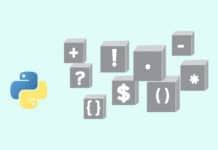Here are some strategies and best practices for leveraging open source to create enterprise-grade web and mobile applications without sacrificing quality or functionality.
In the fast-paced world of enterprise software development, the demand to deliver top-notch applications under tight deadlines is intense. Striking a balance between innovation and budget constraints can be overwhelming. Open source software has emerged as a potent solution, empowering large enterprises to construct resilient, scalable applications while significantly trimming costs.
The successful adoption of open source in an enterprise setting requires a strategic approach and adherence to best practices. The architecture layer categories — frontend frameworks, backend frameworks/languages, databases, web servers, cloud infrastructure/containerisation and DevOps tools — represent the essential building blocks for creating modern, scalable, and high-performing enterprise web and mobile applications. Each category plays a crucial role in the overall architecture and functionality of the application.
Frontend frameworks
Frontend frameworks are the visual backbone of modern web applications, defining the structure, layout, and interactive elements that users see and interact with. They provide a structured approach to building complex UIs, offering reusable components, data binding mechanisms, and efficient ways to manage state changes. Open source frameworks like React, Angular, and Vue.js have become the industry standard due to their flexibility, performance, and vibrant communities. React, developed by Facebook, champions a component-based architecture and a virtual DOM for efficient rendering. Angular, by Google, is a full-featured TypeScript framework with a strong focus on scalability and maintainability. Vue.js, on the other hand, is known for its gentle learning curve and progressive nature, making it easy to integrate into existing projects or build full-fledged single-page applications. The choice of frontend framework depends on factors like project size, complexity, team expertise, and desired features, but all three offer robust solutions for building user-friendly and engaging web experiences.
Popular open source software across architecture layers
| Category | Software | Description |
| Frontend | React | Developed by Facebook, known for its component-based architecture, virtual DOM for efficient updates, and vast ecosystem. Ideal for building highly interactive and dynamic interfaces. |
| Angular | A comprehensive framework by Google, based on TypeScript, with a strong focus on maintainability and scalability. Well-suited for large-scale enterprise applications. | |
| Vue.js | A progressive framework known for its flexibility, ease of learning, and high performance. Often used for building single-page applications (SPAs) and integrating with existing projects. | |
| Backend | Node.js | A JavaScript runtime environment, enabling you to use JavaScript on the server-side. Known for its event-driven, non-blocking I/O model, making it efficient for building real-time applications and APIs. |
| Django | A high-level Python framework, known for its “batteries-included” philosophy, providing many built-in features for rapid development. Promotes clean, pragmatic design and follows the model-view-template (MVT). | |
| Spring Boot | A Java framework that simplifies the bootstrapping and development of Spring applications. Well-suited for building enterprise-grade Java applications, offering a wide range of features and modules. | |
| Ruby on Rails | A popular web framework built on Ruby, known for its “convention over configuration” approach, which reduces the amount of configuration needed. Emphasises developer happiness and productivity. | |
| Database | PostgreSQL | A powerful, open source relational database management system (RDBMS), known for its reliability, data integrity, and extensibility. Supports advanced features like complex queries, transactions, and triggers. |
| MySQL | A widely used open source RDBMS, known for its ease of use, speed, and large community support. Commonly used for web applications and content management systems. | |
| MongoDB | A popular NoSQL database, designed for flexible document-based data storage. Offers high scalability, performance, and availability, making it a good choice for applications with rapidly changing data models. | |
| Web server | Nginx | A high-performance web server and reverse proxy, known for its lightweight design, efficient resource utilisation, and ability to handle a large number of concurrent connections. Often used for load balancing and caching. |
| Apache | One of the most popular web servers globally, offering a wide range of features and modules. Known for its flexibility and stability, but may consume more resources than Nginx under heavy loads. | |
| Cloud infra | Kubernetes | An open source container orchestration platform, automating the deployment, scaling, and management of containerised applications. Offers high availability, load balancing, and self-healing capabilities. |
| Docker | A platform for building, shipping, and running applications in containers. Containers provide a consistent runtime environment for applications, making them portable across different environments. | |
| DevOps | Jenkins | An open source automation server, enabling continuous integration and continuous delivery (CI/CD) pipelines. Supports a wide range of plugins and integrations for building, testing, and deploying applications. |
| GitLab CI/CD | A built-in CI/CD platform within GitLab, allowing you to automate the entire software delivery process within a single application. | |
| Ansible | An open source IT automation tool used for configuration management, application deployment, and task automation. Employs a simple, agentless architecture and uses YAML for defining automation tasks. |
Backend frameworks/languages
Behind the scenes, backend frameworks power the server-side logic of web applications. They handle data processing, business rules, database interactions, and API endpoints that serve data to the frontend. These frameworks provide structure, libraries, and tools that streamline backend development and ensure a smooth flow of data between the client and server.
Node.js, a JavaScript runtime environment, has gained popularity for its event-driven, non-blocking architecture, making it ideal for building real-time applications and APIs. Django, a high-level Python framework, boasts a “batteries-included” philosophy, offering numerous built-in features like an ORM (object-relational mapper), authentication, and admin interface. Spring Boot, built on Java, is favoured for enterprise-grade applications due to its extensive ecosystem and focus on modularity and testability. Ruby on Rails, known for its elegant syntax and emphasis on convention over configuration, prioritises developer productivity and rapid development. The selection of a backend framework hinges on factors like performance requirements, language familiarity, project scope, and the need for specific features or integrations.
Databases
Databases are the foundation of data persistence in enterprise applications, responsible for storing, organising, and retrieving critical information. Choosing the right database is pivotal for ensuring data integrity, application performance, and scalability. Relational databases like PostgreSQL and MySQL adhere to a structured schema and excel in handling complex relationships between data entities. PostgreSQL is renowned for its robustness, advanced features like triggers and stored procedures, and strong adherence to SQL standards. MySQL, on the other hand, is known for its speed, ease of use, and wide adoption in web applications and content management systems. For applications with flexible or evolving data models, NoSQL databases like MongoDB offer a document-oriented approach, prioritising scalability and performance in scenarios where schema changes are frequent. The selection of a database should be carefully aligned with the specific requirements of the application, considering factors like data structure, querying patterns, expected growth, and the need for ACID (atomicity, consistency, isolation, durability) compliance.
Web servers
Web servers are the engines that power the delivery of web content, managing incoming requests from clients, serving static files (like HTML, CSS, and JavaScript), and interacting with backend applications to generate dynamic content. The choice of web server can significantly impact an application’s performance, security, and resource utilisation. Nginx, a high-performance web server and reverse proxy, is renowned for its lightweight design, efficient handling of concurrent connections, and ability to serve static content incredibly fast. It is often used for load balancing and caching, optimising the delivery of content to users. Apache, another widely used web server, offers a vast array of modules and features, providing flexibility for various configurations. While Apache might be more resource-intensive than Nginx under heavy loads, its extensive ecosystem and customisable nature make it a popular choice for diverse web applications. The decision between Nginx and Apache typically hinges on factors like expected traffic volume, the need for specific modules or features, and the server administration expertise available.
Cloud infrastructure/containerisation
Cloud infrastructure and containerisation technologies have transformed the way modern applications are deployed and managed. Cloud infrastructure provides on-demand computing resources, allowing for scalability and cost-efficiency by paying only for the resources used. Containerisation, on the other hand, packages applications and their dependencies into isolated units called containers, ensuring consistent behaviour across different environments. Kubernetes, a leading container orchestration platform, automates the deployment, scaling, and management of containerised applications, making it easier to achieve high availability, fault tolerance, and efficient resource utilisation. Docker, a popular containerisation platform, simplifies the process of creating, sharing, and running containers, promoting portability and reproducibility of applications. The combination of cloud infrastructure and containerisation empowers enterprises to build agile, scalable, and resilient applications that can adapt to changing demands and optimise resource allocation.
DevOps tools
DevOps tools bridge the gap between development and operations teams, fostering collaboration, automating processes, and accelerating the software delivery lifecycle. They facilitate continuous integration (CI) and continuous delivery (CD), enabling faster feedback loops, quicker bug fixes, and more frequent releases. Jenkins, a widely adopted automation server, provides a comprehensive framework for building CI/CD pipelines, orchestrating various stages of the software development process, and integrating with numerous tools and platforms. GitLab CI/CD, integrated within the GitLab platform, offers a unified solution for code management, version control, and automated software delivery. Ansible, a powerful automation tool, simplifies configuration management, application deployment, and infrastructure orchestration through its agentless architecture and declarative language. Embracing DevOps tools empowers organisations to streamline their development workflows, reduce manual errors, enhance collaboration, and deliver software more efficiently and reliably.
The power of open source
Open source empowers enterprises to:
- Reduce costs: Eliminate licensing fees and vendor lock-in.
- Accelerate development: Leverage a vast community of contributors for faster innovation and issue resolution.
- Increase flexibility: Customise and tailor solutions to meet specific business needs.
- Enhance scalability: Utilise cloud-native technologies for efficient scaling and resource management.
- Improve reliability: Benefit from battle-tested software that is continuously refined and improved.
- Foster innovation: Encourage experimentation and adoption of new technologies without excessive financial risk.
By embracing open source, enterprises can gain a competitive edge, build applications faster, and deliver better experiences to their users, all while optimising costs and maximising value.
Embracing open source: Best practices for enterprise success
Successful adoption of open source in an enterprise environment requires more than just selecting the right tools; it demands a strategic approach and adherence to best practices. Here’s how to navigate the open source landscape with confidence.
- Due diligence: Don’t rush into decisions. Before integrating any open source component, evaluate it thoroughly. Scrutinise its code quality, track record of security vulnerabilities, the level of community engagement (how active and responsive the community is), the clarity and completeness of documentation, and the specific licence terms. This ensures that the chosen component aligns with your company’s technical and legal requirements.
- Active community participation: Open source communities are treasure troves of knowledge, support, and innovation. Actively participate by reporting issues, asking questions, and sharing your insights. Engaging with the community allows you to stay informed about updates, potential vulnerabilities, and best practices, fostering a collaborative environment that benefits everyone.
- Customisation and integration expertise: Open source software often requires tailoring to fit your specific needs. Invest in developing or acquiring the expertise needed to customise and integrate open source components seamlessly into your existing infrastructure. This ensures that the software functions optimally within your unique environment.
- Robust security practices: Security is paramount, especially in enterprise applications. Establish rigorous security policies and protocols for open source components. Conduct regular security audits, promptly apply patches and updates to address vulnerabilities, and stay informed about potential threats.
- Hybrid approach: Flexibility is key. Don’t hesitate to combine open source solutions with commercial software where appropriate. A hybrid approach allows you to leverage the best of both worlds — the cost-effectiveness and flexibility of open source with the specialised features or dedicated support offered by proprietary solutions.
- Data governance: With the increasing reliance on open source cloud solutions, it’s imperative to establish comprehensive data governance practices. This includes ensuring compliance with data privacy regulations, implementing robust access controls, and encrypting sensitive information to safeguard your data assets.
Real-world examples
Numerous large companies have successfully leveraged open source to build cutting-edge applications.
- Netflix uses a wide range of OSS, including Node.js and React, for its streaming platform.
- Facebook employs React, a JavaScript library it created, to power its dynamic user interface.
- Airbnb utilises Ruby on Rails as the foundation for its web application.
Open source software provides a rich ecosystem of tools and frameworks, offering enterprise-level solutions without the high costs of proprietary alternatives. By carefully evaluating and selecting the right tools for each layer of your application architecture, you can create a robust, scalable, and cost-effective foundation for your enterprise web and mobile applications. By adhering to best practices, enterprises can maximise the benefits of open source software while minimising risks. Open source offers a powerful pathway to innovation, cost reduction, and flexibility, but its successful integration requires a thoughtful and strategic approach.






































































